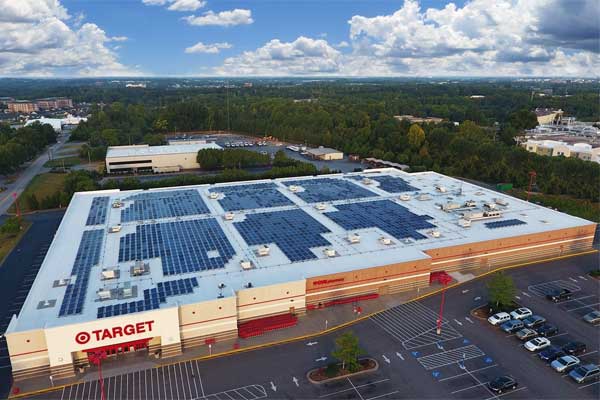Target now tops the list of American Corporate businesses actively embracing solar technology.
Target Corporation is the second-largest discount retailer in the United States, behind Walmart, and is a component of the S&P 500 Index.
The company is now first, ahead of Walmart taking the top corporate user of solar power spot. This was revealed in a new report published by the U.S Solar Energy Industries Association (SEIA) as part of its 2016 Solar Means Business report.
The report also acknowledged that more American businesses are installing solar than ever before.
Target installed more solar power this year than any other U.S. retailer. The company now boasts 147.5 megawatts (MW) of installed solar capacity; ranking No.1 for the first time in the report’s five-year history.
“We feel honored to be named the top corporate solar installer in the U.S. by the Solar Energy Industries Association,” said John Leisen, vice president of property management at Target in a SEIA press release statement. “We’re incredibly proud of the progress we’ve made in improving building efficiencies and reducing environmental impact. Our commitment to installing solar panels on 500 stores and distribution centers by 2020 is evidence of that progress.”
The 2016 Solar Means Business report also mentioned 9 other Corporate leaders as well as their solar capacity.
The list includes the perennial champion Walmart (145 MW), Prologis (107.8 MW), Apple (93.9 MW), Costco (50.7 MW), Kohl’s (50.2 MW), IKEA (44 MW), Macy’s (38.9 MW), General Growth Properties, Inc. (30.2 MW) and Hartz Mountain Industries (22.7 MW).
Corporate solar capacity installations top 1,100 MW in the United States, span 38 states plus Washington D.C. and Puerto Rico and produce enough solar power to for 193,000 homes every year.













Comments